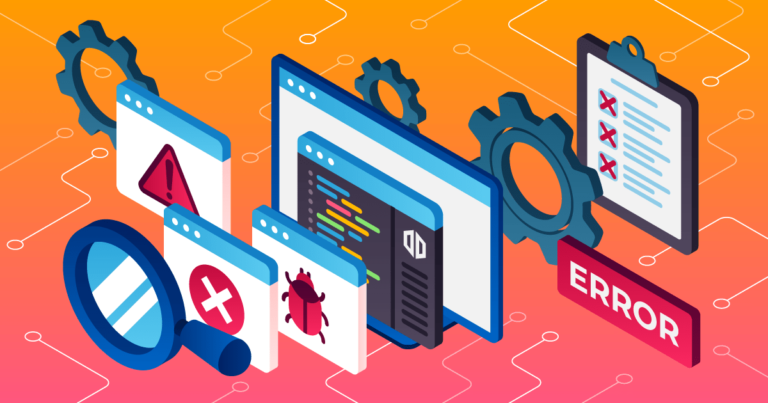Troubleshooting | The Most Common Errors in Tensorflow: Resolve it in Quick Steps

Tensorflow is a framework that is commonly used for deep learning and the building of applications that involve multi-layered neural networks. It is worth mentioning that this framework is significantly gaining increasing acceptance all over the world. Partly because it is easy to use and deploy and partly because it can work with the various programming language. It is generally for these reasons and many others, that the Tensorflow library is mostly acclaimed to make machine learning a lot less complicated. Helping developers create wonderful applications that run on multiple APIs very easily. Companies such as Google (obviously because they created the framework), Coca-Cola, Airbnb, and Twitter are a few of those taking full advantage of Tensorflow.i
However, working with Tensorflow is never completely without its unique problems as a single Tensorflow mean square error can have a devastating effect on even the finest piece of work.
What are Tensorflow Errors and Types of Errors
Tensorflow is preferred amongst developers because it usually takes very large datasets, then learns and relearns them over and over again to increase efficiency. And this type of large scale training and retraining is a big deal in both deep learning and machine learning. The model works through a very straightforward process; a structure known as dataflow is first created, then the dataset is moved through one processing node (also known as a graph) to the next and then the next one. And in between each node is a multidimensional data known as tensor.
When anything goes wrong during the process described above, the code would return a Tensorflow error. Practically speaking, some of these errors may occur during the time an application or program is being created. While in other cases the issues may only be returned during the deployment and execution of these programs and application built on deep neural networks that contain the Tensorflow mean square error.
Usually, it is only the mathematical operations of the Tensorflow framework that is built on another complex language such as C++. The largest part of a Tensorflow framework is written and built on Python. For this reason, many of the common errors observed with the framework are those that are common with Python codes.
The two most common types of Tensorflow errors are AttributeError and ImportError.
- Class AttributeError
Whenever we are working with Tensorflow and we try to give an incorrect assignment or a wrong reference, the program would return what we call AttributeError. The error usually occurs when we try to append integer objects as integer objects do not support appending as a matter of principle.
Inspect the piece of codes below:

Running it will give us the output below:

- Class ImportError
This is one of Tensorflow common installation problems. The error is returned when we install a wrong version of Tensorflow and then try to call a module that is not supported by the installed version.
A Tensorflow import error is recognized as the base for what developers call the ModuleNotFoundError. When the import statement cannot load a requested module (because it doesn’t exist on the installed version) or when the line of code from…import cannot find a name that has been requested, the result is an error importing Tensorflow.
Let’s say we try to run the line of code below:

What we will get as output would be the Tensorflow import error below:

The errors above are considered as the most frustrating of Tensorflow common installation problems. However, they are not the only common errors that may be raised while using Tensorflow. Other common errors include:
- Class AssertionError
Bugs are a common occurrence when trying to train a model and they occur in Tensorflow as well. When developers are trying to debug a piece of code to test conditions, they use assert statements. An AssertionError, therefore, occurs when the assert statement being used fails.
Let’s say we try to run the code with assert statement below:

There is no way the objects (a and b) are equal to each other. Hence output would be the AssertionError below:

- Class MemoryError
This error is common because with Tensorflow we are allowed the chance to work with very large datasets. And while working with these datasets to train a program the objects and variables that we write are usually stored on the RAM of our computers. This is not always a problem until the data file we are working with becomes too large for the RAM to handle. It is usually at that point that a MemoryError will be returned and our program would seize to run.
- Class DataLossError
Developers have also identified Tensorflow losses to be a very common occurrence when working with this framework. A tf.losses.mean_squared_error can occur when data is truncated in the middle of a training exercise. The truncation usually occurs because the data being used has been lost irrecoverably or there has been some form of corruption on the data file.
How to Deal with Mean Square Error Tensorflow
Dealing with Tensorflow mean errors is an important part of the job of any developer. And since the errors are common and mostly similar, we can easily deal with this error by reading what other Tensorflow users did when they too experienced such errors. Some of the best ways to deal with these errors include, but are not limited to the following:
- Run Multiple Training Cycles
Detecting a Tensorflow mean squared error is the first step towards rectifying it. And the best way to identify an error is to run the training iterations several times. When you run the program repeatedly for an appropriate number of times and it does not return any failures or errors, you can then go ahead to build and deploy the application. However, if it returns an error message after some iterations, you use one of the other many ways to deal with the issue.
- Using the ‘Try’, ‘Except’, ‘Else’, and ‘Finally’ Blocks
Using these blocks in that particular order helps us detect where an error can be thrown and even go ahead to run the code despite the error at the end of the ‘finally’ block.
- Using the Right Parameters
As using the wrong parameters such as shape can sometimes result in a Tensorflow squared mean error, it is always good to check to see that we are using the right parameters. Tensorflow framework is unique and some parameters are simply specific to it. It is good that we remember this as we may be confronted with strange issues that may not occur in other traditional computations.
- Using the Right Commands on the Right Version
An error can be thrown when we use an old command on a newer version of Tensorflow when the newer version does not contain such commands in its libraries. And in some cases, the commands and arguments could exist in the library of the newer Tensorflow but in a different arrangement. Using the right commands with the right version of Tensorflow or simply changing the arrangements of the argument could help deal with errors.
- Using the APIs Properly
Even though Tensorflow can be used across a rich set of APIs, different APIs use different assumptions. A training with the same dataset may, therefore, be successful on one API and then fail on another API. Understanding the assumptions that the API you are working with will significantly help deal with failures and errors.
Examples of Common Tensorflow Mean Errors
The following are examples of Tensorflow errors that we have collated from various Tensorflow users.
- The first example is a mean squared error example with a loss function. Generally, developers use the loss function for predictions during a Tensorflow training.
loss = tf.reduce_sum(tf.pow(prediction – Y,2))/(n_inoss = tf.reduce_mean(tf.squared_difference(prediction, Y))
loss = tf.nn.l2_loss(prediction – Y)
tf.squared_difference is the same as tf.pow. Hence, the first two lines of the above code would yield the same result. The third line will, however, return the result of ½ of the squared Euclidean number.
- The second example is a piece of code that results in an AttributeError.
>>> import tensorflow as tf
Traceback (most recent call last):
File "<stdin>", line 1, in <module>
File "/Library/Python/2.7/site-packages/tensorflow/__init__.py", line 24, in <module>
from tensorflow.python import pywrap_tensorflow # pylint: disable=unused-import
File "/Library/Python/2.7/site-packages/tensorflow/python/__init__.py", line 47, in <module>
import numpy as np
File "/Library/Python/2.7/site-packages/numpy/__init__.py", line 142, in <module>
from . import core
File "/Library/Python/2.7/site-packages/numpy/core/__init__.py", line 57, in <module>
from . import numerictypes as nt
File "/Library/Python/2.7/site-packages/numpy/core/numerictypes.py", line 111, in <module>
from ._type_aliases import (
File "/Library/Python/2.7/site-packages/numpy/core/_type_aliases.py", line 63, in <module>
_concrete_types = {v.type for k, v in _concrete_typeinfo.items()}
File "/Library/Python/2.7/site-packages/numpy/core/_type_aliases.py", line 63, in <setcomp>
_concrete_types = {v.type for k, v in _concrete_typeinfo.items()}
AttributeError: 'tuple' object has no attribute 'type'
The last example is one that results in an ImportError:
>>> import tensorflow
Traceback (most recent call last):
File "<stdin>", line 1, in <module>
File "/Library/Python/2.7/site-packages/tensorflow/__init__.py", line 24, in <module>
from tensorflow.python import pywrap_tensorflow # pylint: disable=unused-import
File "/Library/Python/2.7/site-packages/tensorflow/python/__init__.py", line 47, in <module>
import numpy as np
File "/Library/Python/2.7/site-packages/numpy/__init__.py", line 140, in <module>
from. import _distributor_init
ImportError: cannot import name _distributor_init
Solutions and Tips for Handling Common Tensorflow Mean Square Errors
Below are some of our favorite solutions and tips for handling the common Tensorflow mean square errors:
- Always upgrade to the latest version of both Tensorflow and Python
- Be sure you are using a 64bit computer as Tensorflow only works on that
- Be sure you have enough space on your computer
- Have a good understanding of the commands and arguments that work on your version of Tensorflow
- Understand the different assumptions associated with the APIs you use
Conclusion
A Tensorflow mean square error may sound like a very simple concept yet it can have a devastating effect on our works as developers. This is wof we have not only highlighted the problems but some of the common solutions as well. When it happens that we import Tensorflow as tf error, we can try one of the many ways of handling the error and then try to resolve it. The same thing applies when we experience an error while trying to install Tensorflow.
We aim to provide as much knowledge on machine learning as possible and subscribing to our newsletter will help keep you up to date. We have also created a comprehensive course on Tensorflow. Would you like to check it out?



